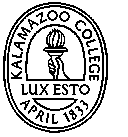
A few questions with answers
1. Explain the difference between scarcity and a shortage
All goods and resources are scarce; scarcity means limited. A shortage implies there is too little available at the current price (Qd > Qs). A shortage can be solved by raising prices.
2. Explain the difference between a surplus and consumers surplus.
Surplus is a disequilibrium concept, where quantity supplied is greater than quantity demanded; price is too high. Consumer surplus is the idea of net benefits to consumers, or the difference between willingness to pay and actual payment.
3. If Bill earns $10/hour, what is the most economic way for him to
travel from DC to Little Rock? Explain.
Walk: $1 and 750 hours
Bus: $79 and 30 hours
Train: $180 and 20 hours
plane: $400 and 4 hours
private jet: $3000 and 2 hours
Travel involves two costs: money and the opportunity cost of his time. At this hourly wage, he should take the bus.
4. Distinguish an increase in demand from an increase in quantity demanded, using 2 graphs. Explain the different factors that could cause these increases.
[an increase in demand is a new demand curve, to the right of the original
curve]
Demand can increase if: preferences, income, substitutes, complements,
or the number of consumers change.
[an increase in quantity demanded is a downward movement along a demand curve] Quantity demanded will increase if price decreases.
5. Graph the effect of an increase in the price of cameras on the market for film. Explain.
These goods are complements. An increase in the price of cameras would decrease the demand for film [shift the demand curve to the left]
6. How well do each of the following markets meet the assumptions of
a competitive market? Explain.
a. The US stock market: fairly well. lots of independent buyers and
sellers
b. wheat: fairly well. many independent farmers and purchasers
c. electricity: poorly. only one producer in most markets
d. US autoworkers: poorly: a few buyers (the auto companies) and a union
represents the sellers (the workers)
e. aircraft: poorly. only a few producers (Boeing, Airbus...)and a few
consumers (the airlines)
7. If the equilibrium price for gasoline is $2, what would happen if the maximum legal price was set at $1?
A shortage. Consumers would not be able to buy the gas they wanted.
go to answers
return to Spring classes
